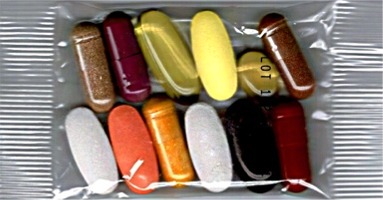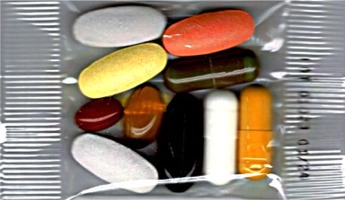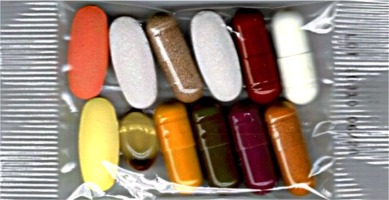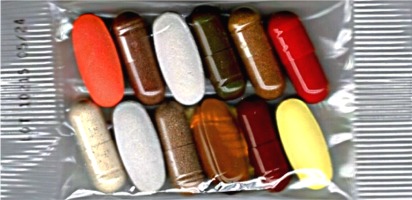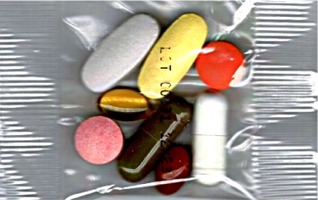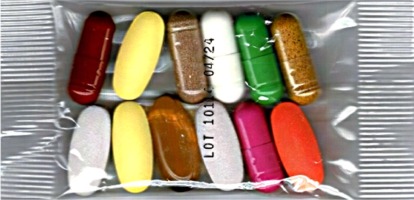|
ANR Formula One,
Two, Three, Four,
Five, Six, Seven
Heart, Alert, Maximus,
CATALOG
A state of mind and body nearing Shangri-La is now
accessible to more people than ever before. Research in geriatrics, the field
of aging, indicates that the limits on lifespan extend beyond the century
mark. With the incredible advances that have been made in the field of
nutrition, those among us willing to study and experience the impact of
nutrition on our health actually have a shot at quality of life in our later
years. With commitment and discipline, some of us could acquire sufficient
wisdom, access to information and spiritual poise, to experience an existence
that is productive and playful, sensual and satisfied, until the very last
days of our lives.
A consensus has emerged among geriatric researchers that
aging features a progressive loss of organ functions. This means we all will
die eventually, but it also has another implication: that as organ functions
decline, the course of aging can be "successful," i.e., relatively
free of chronic disease; or "unsuccessful," i.e., plagued by aches
and pains and other aspects of chronic disease. To age successfully, the
individual must strive to integrate the many facets of healthy living into a
daily lifestyle that aims at optimal health. And optimal nutritional status is
a prerequisite for optimal health.
ANR Formula One,
Two, Three, Four,
Five, Six, Seven
Heart, Alert, Maximus,
CATALOG
Energy Nutrients for the Body
The key to optimal health may be to minimize stress to the body. Research
on stress, dating back to the pioneering work by Hans Selye, M.D., in Canada,
has broadened beyond emotional stress per se into a more global
"stressor" analysis in which stressful influences or stressors
challenge the biochemical defenses, causing vitamins and metabolites to be
lost from the body. Stressors threaten homeostasis, the maintenance of the
conditions essential for life, the healthy status quo. According to this
stress-homeostasis model, health is an outcome of the ongoing balance between
stressors that will tend to deplete vitamins and metabolites from the tissues
and those positive influences that replete and conserve these substances,
thereby supporting homeostasis and allowing the body better protection against
toxins, infections, emotional stress, and so on.
On this broad-based, integrative model of health and disease, aging is a
stressor. As the body ages, it becomes less efficient at digesting, absorbing
and utilizing nutrients, and perhaps also less efficient at "intermediary
metabolism," that is, the pathways of linked reactions necessary to
activate vitamins, synthesize needed metabolites, or otherwise transform or
modify nutrients. These inefficiencies surely threaten homeostasis on an
organ-by-organ basis. Very likely the organ that is genetically weakest will
be the first to develop cracks in its facade, and as it progressively loses
function diagnostic techniques come to detect the emergence of disease. So, to
hold the line" against disease, older people must strive to minimize
their exposures to stressors, and along with exercise, take larger quantities
of a greater diversity of nutrients.
According to this stressor-homeostasis model of health, lifestyle
improvements and exercise for the elderly will not suffice without dietary
revision. Against a poor nutritional background even exercise can be a
stressor, depleting minerals, B vitamins and antioxidants that are not being
replaced. It may not matter greatly whether specific vitamins, minerals, and
other nutrients come from foods, liquids, "green drinks," or dietary
supplements, so long as adequate amounts are supplied in appropriate balance.
Certainly for the aging individual, this proven need for larger quantities of
a greater diversity of nutrients translates into a need to consume a broad
range of healthful foods with the highest possible nutrient densities.
Also, recent research indicates that (for whatever reasons) some nutrients
provide adequate protection against disease at intakes that simply are not to
be achieved coming only from foods. Examples are vitamin E and beta-carotene,
omega-3 fatty acids, and minerals like magnesium, zinc, boron and molybdenum,
which are very limited in even the best-structured diets.
Underlying the stressful influences linked to unsuccessful aging is
cumulative free radical damage. Free radicals are molecules that are
particularly reactive from having an unpaired electron, and such radicals can
tear apart important biological molecules. Free radical sources are
widespread, coming at the body from the sun's rays, the soil, foods,
pollutants, emotional stress, exercise, and traumatic events such as wounds or
burns.
Our options are to keep to a minimum the outside sources of free radicals,
and to nutritionally optimize our anti-free radical, antioxidant defenses. Our
antioxidant defenses rely heavily upon intake of antioxidants with the diet.
Certain B vitamins serve as electron pair shuttles or reservoirs. The major
antioxidant nutrients include ascorbate (vitamin C), tocopherol (vitamin E),
beta-carotene, cystine, taurine, lipoate and coenzyme Q10.
ANR Formula One,
Two, Three, Four,
Five, Six, Seven
Heart, Alert, Maximus,
CATALOG
Energy Nutrients for the Brain
The newest frontier in energetics and aging is represented by the apparent
potential of energy nutrients to stabilize and (perhaps) partially rejuvenate
the aging brain. Acetylcarnitine crosses the blood-brain barrier more readily
than does carnitine, and has been shown to revitalize brain function via
energetic pathways. Subjects with cognitive and memory impairments have
experienced measurable benefit. Acetylcarnitine's beneficial effects on
energetics complement those of Coenzyme Q-10, and are likely also to
complement the membrane-active phospholipids, including phosphatidylcholine
(PC) and another phospholipid called phos-phatidylserine (PS).
Cognitive and memory impairments associated with aging have been linked
partially to the lowered production and release of acetylcholine (ACh), the
brain's most widespread nerve transmitter. In human studies, dietary
supplementation with PC has boosted blood levels of choline, which the brain
can use towards making ACh. Clinical benefits from trials with PC have been
limited, which may underline the importance of using an array of nutrients in
aging rather than relying on single nutrients to be "magic bullets."
The phospholipid PS has given better results in clinical trials.
Human trials with PS number at least 23 to date, of which 12 were
double-blind and involved almost 1200 subjects. Intakes of PS were usually 300
mg daily. In one U.S. double-blind trial on mildly impaired aged subjects, PS
statistically improved the learning and recall of names and faces, telephone
numbers, and misplaced objects, as well as paragraph recall and the ability to
concentrate. In this area, PS may have "rolled back the clock" by up
to 12 years.
Other nutrients may have benefits in aging, but the nutrient categories
outlined above, minerals, B vitamins, antioxidants, energy nutrients, and
phospholipids, ought to be at the core of a rational, integrative approach to
dietary revision aimed at lengthening the "health span" of modern
mature adults.
Also see:
Phytochemicals: Nutrients Of
The Future
Antioxidants: An Antidote to
Aging?
Better Eating for Better Aging
Nutrition Is Key To Successful
Aging: Kidd
Latest Concepts in Nutrition
Life Long Weight Management
for Health & Happiness
10 Tips to Healthy Eating
New Perspectives on Diet and
Cancer
Upbeat on Fiber for Longer
Life & Better Health
A Refresher On Water for Long
Life & Health
Reference Guide for Vitamins
Reference Guide for Minerals
Reference Guide for Herbs
Reference Guide for Amino
Acids
Reference Guide for Special
Nutrients
Reference Guide for
Anti-Oxidants
Reference Guide for Nutritional
Greens
Reference Guide for Digestive
Nutrients
Reference Guide for Dietary
Fibers
Suggested Readings and Guide
References
ANR Formula One,
Two, Three, Four,
Five, Six, Seven
Heart, Alert, Maximus,
CATALOG
|
